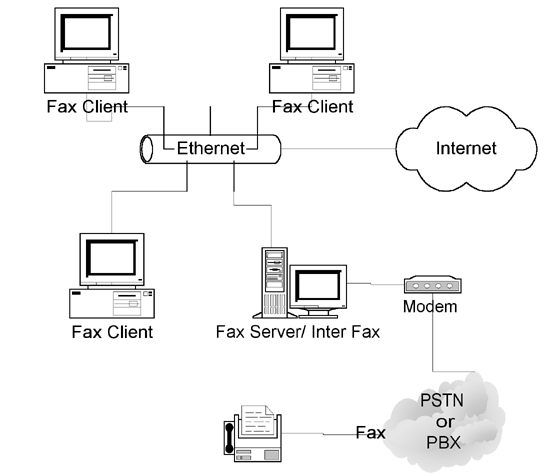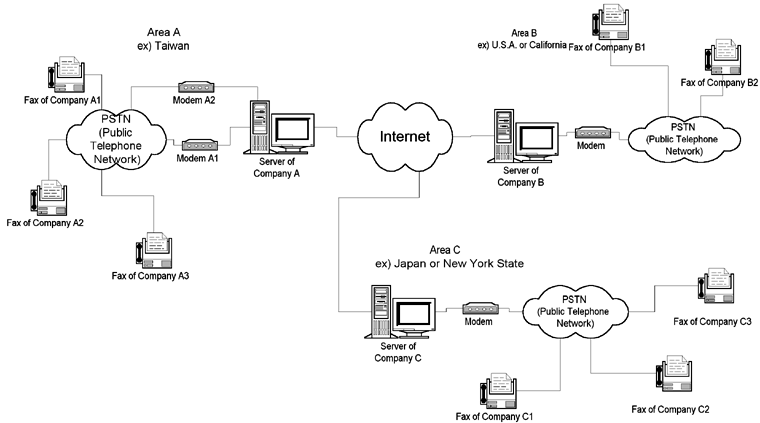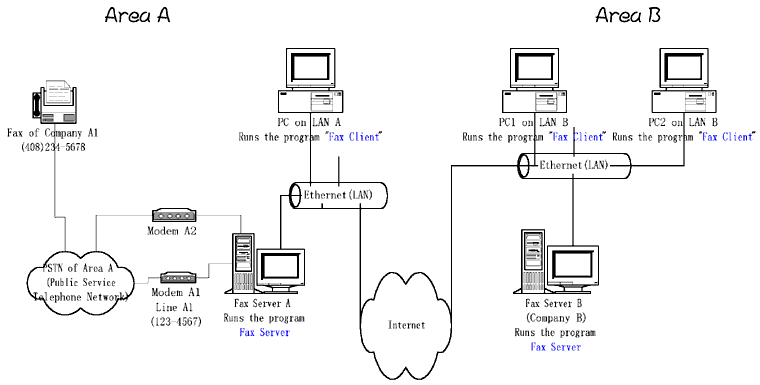
 |
|||||||||
Important Concepts
Fax, the most popular communication tool, is a must-have tool in modern enterprises. However, traditional fax machines have some limits which also limits the efficiency of modern business.
Here, we'll compare three different models of sending/receiving faxes. The first model is "Traditional Fax", which is the most popular and familiar way we handle faxes. The second model is "Internet Fax Service", this model is an enhancement of "Long Distance Fax", its benefit is to reduce the cost of long distance calls, and does not make any difference to people of fax sender/receiver. The third model is our new "E-Fax", this model provides many sending/receiving ways. Due to its flexibility, users may need to know more about it in order to maximize its full function.
Traditional Physical Fax


Internet Fax Service Providers have to build many gateways in the world. However, E-Fax systems utilizes the current friend and partner relation to build gateways of each others.
Basic architecture of a small business (or a division in a larger company)

Full Concept Diagram

The Detail it works

| Options of each modem/line You'll see two buttons on the right side of each line: 1. Receive 2. Print or Forward They are used to control the behaviors of the incoming faxes from physical telephone lines |
People can view/print Faxes stored in Fax Server B via the LAN. They can also use Fax Client program to send Fax to remote fax machines. |
| when Receive = ON, Fax Server will enable that modem to receive fax from the telephone line. Once a fax is received, it'll be stored in a local hard disk folder first, and then you can 1. Do nothing (no forwarding/printing) 2. Forward this fax to a remote fax server 3. Print out the fax Once the fax is forwarded or printed, the fax file will be moved to the backup folder If the fax is not forwarded/printed, it will be kept in the fax folder. |
If PC2 on LAN B wants to send a Word document to company A1(234-5678). You need to : 1. Print that Word document to the FAX printer 2. Our fax printer driver will convert the Word document into a fax file, then shows the final result to let you preview the fax. 3. If the docuement is OK, you can send it to Fax Server A (remote Fax Server), and Fax Server A will send this fax via modem A1 or A2 to 234-5678 (a local call) Fax Server A may forward all the incoming faxes from Modem A1 to Fax Server B. That is, company B's customers can treat Line A1 (123-4567) as a direct fax line to company B. In this case, we say that "Modem A1" is a "Virtual Fax" of Company B. (People can use a traditional Fax machine to send internet fax without any computer knowledge) |